COSPAR ID 2010-050A Bus DFH-3 Launch date 1 October 2010 Launch mass 2,480 kg | SATCAT no. 37174 Launch mass 2,480 kg | |
 | ||
Mission duration Planned: 6 months6 years, 5 months and 1 day elapsed Operator China National Space Administration Similar Tiangong‑2, Shenzhou, Chang'e 1, Tiangong‑1, Tianzhou | ||
Chang'e 2 ( /tʃæŋˈʌ/; simplified Chinese: 嫦娥二号; traditional Chinese: 嫦娥二號; pinyin: Cháng'é èr hào) is a Chinese unmanned lunar probe that was launched on 1 October 2010. It was a follow-up to the Chang'e 1 lunar probe, which was launched in 2007. Chang'e 2 was part of the first phase of the Chinese Lunar Exploration Program, and conducted research from a 100-kilometer-high lunar orbit in preparation for the December 2013 soft landing by the Chang'e 3 lander and rover. Chang'e 2 was similar in design to Chang'e 1, although it featured some technical improvements, including a more advanced onboard camera. Like its predecessor, the probe was named after Chang'e, an ancient Chinese moon goddess.
Contents
- China s chang e 2 space probe 31m miles from earth
- Design
- Launch
- Lunar mission
- L2 mission
- 4179 Toutatis mission
- Deep space journey
- References
After completing its primary objective, the probe left lunar orbit for the Earth–Sun L2 Lagrangian point, to test the Chinese tracking and control network, making the China National Space Administration the third space agency after NASA and ESA to have visited this point. It entered orbit around L2 on 25 August 2011, and began transmitting data from its new position in September 2011. In April 2012, Chang'e 2 departed L2 to begin an extended mission to the asteroid 4179 Toutatis, which it successfully flew by in December 2012. This success made China's CNSA the fourth space agency to directly explore asteroids, after NASA, Europe's ESA and Japan's JAXA. As of 2014, Chang'e 2 has travelled over 100 million kilometres from Earth, and is conducting a long-term mission to verify China's deep-space tracking and control systems.
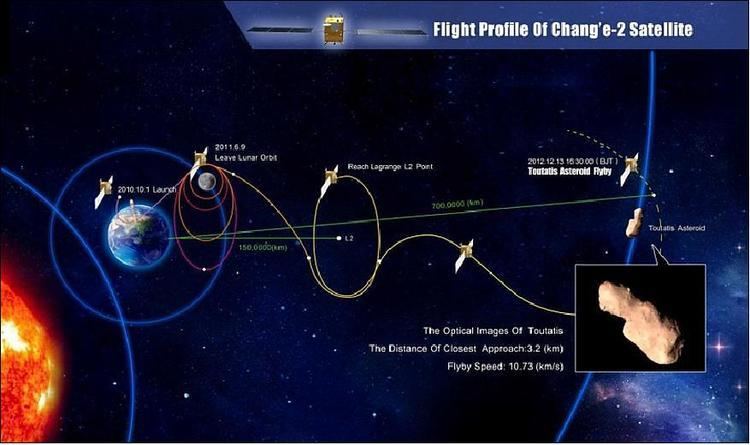
China s chang e 2 space probe 31m miles from earth
Design

Chang'e 2 was broadly similar to the Chang'e 1 probe, but had important differences. While Chang'e 1 operated in a 200-kilometer orbit, Chang'e 2 flew at only 100 kilometers, allowing for higher-resolution images and more precise science data. The probe also possessed a higher-resolution camera, able to resolve features as small as 1 metre (3.3 ft) across from orbit. According to Qian Huang of the Shanghai Astronomical Observatory and Yong-Chun Zheng of the NAOC, the spacecraft also had a shorter Earth-to-Moon cruise time of 5 days, rather than 12. The probe's launch rocket had two more boosters to accomplish this more direct route to the Moon. Furthermore, its laser altimeter's footprint was smaller than Chang'e 1's, achieving 5-meter vertical accuracy in its estimate of the Moon's radius. It also pulsed more frequently – five times per second rather than just once per second, as Chang'e 1's altimeter did. Additionally, the probe's main camera had a spatial resolution of 10 metres (33 ft), rather than 120 metres (390 ft). The total cost of the Chang'e 2 mission was approximately CN¥900 million (US$134 million).

Late in the mission, Chang'e 2's orbit was lowered to an elliptical one, with the same apolune (100 kilometers) as Chang'e 1, but with a perilune of only 15 kilometers. Tracking for the mission was performed with an X-band radio capability, which was not available for Chang'e 1. Zheng remarked that "the mission goals of CE-2 were focused into the high resolution image for the future landing site of CE-3 lunar lander and rover. The key technology about soft landing on the Moon will be tested in the CE-2 mission. The success of CE-2 will provide an important technical basis for the successful implementation of China's future lunar exploration."
Launch
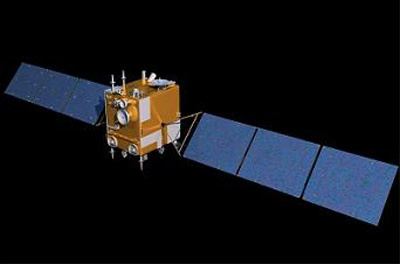
Chang'e 2 was launched on 1 October 2010 at 10:59:57 UTC aboard a Long March 3C rocket from Xichang Satellite Launch Center in Xichang, Sichuan. The launch of the probe coincided with China's National Day on 1 October, in a symbolic celebration of the country's 61st anniversary.
Lunar mission
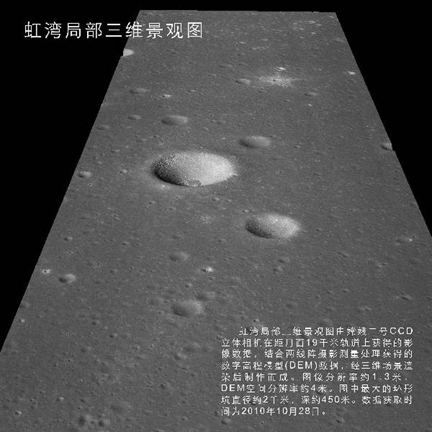
The spacecraft entered an orbit with a perigee of 200 kilometers and an apogee of 380,000 kilometers, and separated from the carrier rocket as planned. It was the first time that a Chinese lunar probe directly entered an Earth-to-Moon transfer orbit without orbiting the Earth first. After the launch, Chang'e 2 arrived in its lunar orbit within 4 days and 16 hours, much faster than the 12 days taken by Chang'e 1. Later, the probe lowered its orbit to 100 km (62 mi), with a perilune of 15 km (9.3 mi). Chang'e 2 entered its 100 km working orbit on 9 October 2010 after three successful brakings. On 8 November 2010, the Chinese government announced the success of all of Chang'e 2's mission objectives, and published lunar surface images with a resolution of up to 1.3 metres (4.3 ft). In February 2012, the Chinese government released a complete lunar map constructed from Chang'e 2's data, claiming that it was the highest-resolution map of the entire Moon yet recorded.
L2 mission
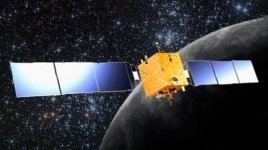
On 8 June 2011, Chang'e 2 completed its extended mission, and left lunar orbit for the Earth–Sun L2 Lagrangian point, to test the Chinese tracking and control network. The probe reached L2 on 25 August 2011 at 23:27 Beijing time (14:27 UTC) after a 77-day cruise, becoming the first object ever to reach the L2 point directly from lunar orbit, and travelling further than any previous Chinese space probe. The probe beamed its first batch of data from L2 in September 2011. Though it was expected to remain at L2 until the end of 2012, it departed on an extended mission in April 2012.
4179 Toutatis mission
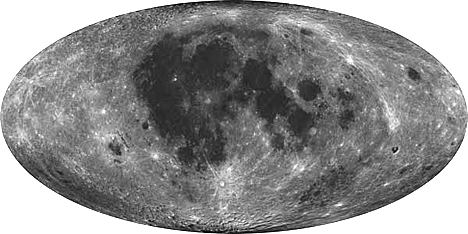
According to Ouyang Ziyuan's report to the 16th Conference of the Chinese Academy of Sciences, Chang'e 2 departed from L2 on 15 April 2012, and began a mission to the asteroid 4179 Toutatis. The flyby was successfully achieved on 13 December 2012 at 16:30:09 Beijing Time (08:30:09 GMT). Close-up images of the asteroid, with a resolution of up to 10 metres (33 ft) per pixel, were later published online. The flyby was the first time an unmanned spacecraft had imaged the asteroid so closely. Chang'e-2 came as close as 3.2 kilometres (2.0 mi) to Toutatis, and took pictures of the asteroid at a relative velocity of 10.73 kilometres (6.67 mi) per second. China thus became the fourth space agency to conduct a successful mission to an asteroid, after NASA, Europe's ESA and Japan's JAXA.
Deep-space journey
As of 2016, Chang'e 2 has reached a distance of over 200 million kilometers from Earth; potentially, it has enough fuel remaining to continue functioning up to a distance of 300 million kilometers, according to the China Aerospace Corporation. The probe is being used to further verify China's deep-space tracking and control capabilities, Chang'e 2 will continue to fly, returning somewhere closer to the earth around 2029.
